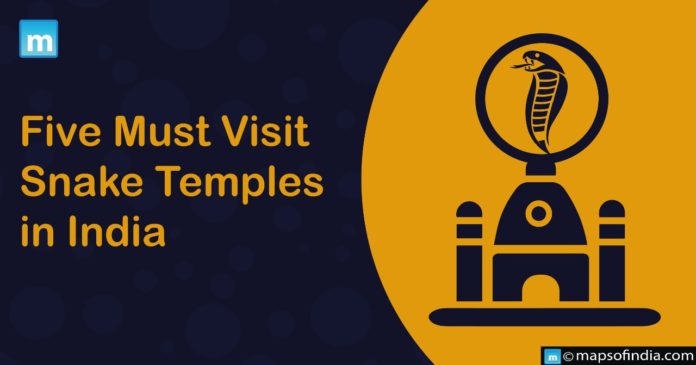The religious nation of India is home to various temples devoted to serpents, some of which are world-renowned. Interestingly, snakes have a high status in Indian mythology and are revered. Hindus worship serpents as Gods, referring to them as Nag Devata. Snake killing is considered a sin in Indian society. If a snake is mistakenly killed, a puja is done.
Following are the top five snake temples in India:
The Mannarsala Temple
Location: Kerala
- It is one of India’s most significant and most prominent snake temples near Mannarsala, Kerala.
- The shrine is dedicated to Lord Nagaraja, the snake ruler.
- Within its enclosure, which leads to the temple, there are around 30,000 stone snake statues and representations.
- The Mannarashala Temple is believed to have been built by Lord Parashurama.
- The temple is claimed to be 3,000 years old. It is customary for newlyweds and childless couples to visit temples and make a wish for children.
- Another unique feature of the temple is that the prominent priest is a woman.
The Temple of Bhujang Naga
Location: Gujarat
- The Bhujiya Fort lies on the borders of Bhuj, Gujarat.
- According to legend, the fort is named after the last Naga Clan Bhujanga, who fell in combat.
- Locals constructed the Bhujang Naga Temple on the Bhujiya hills in his honour.
- During Nag Panchami, a celebration is held annually around the temple.
- The fort is currently under the control of the Indian Army and is used to stockpile munitions.
The Nagaraja Temple
Location: Tamil Nadu
- The temple is located in the middle of Nagercoil town and contains several statues of serpents, particularly cobras.
- The temple’s major devatas (deities) are Nagaraja and Krishna, while the upadevathas are Shiva, Subrahmanya Swami, Ganesha, and Dwarapalaka.
- Nagaraja is displayed as a five-headed serpent. The Nagaraja Temple inspired the city of Nagercoil’s name.
- Though the exact age of the temple is unknown, there is a legend surrounding its construction.
- According to legend, a girl was mowing grass when her sickle unintentionally struck the five-headed serpent.
- The girl ran away to the neighbouring settlement, where she reported the incident. Consequently, the village residents went to the location, cleaned it up, constructed a shrine, and maintained it as a place of devotion.
The Sheshnag Temple
Location: Jammu & Kashmir
- Sheshnag, commonly known as the Lord of Snakes in folklore, constructed a lake near Pahalgam.
- Because it is claimed that Sheshnag still dwells here, a shrine devoted to the snake god has been constructed on its banks.
- Pilgrims on their way to Amarnath Cave stop here to worship Sheshnag. The beautiful surroundings and lush greenery of the sacred place are fantastic.
The Agasanahalli Nagappa Temple
Location: Karnataka
- Because the sage Agastya is claimed to have meditated here, this location is known as Agasanahalli.
- According to folklore, Lord Narasimhaswamy appears at Agasanahalli as Lord Subramanya (the Lord of Snakes).
- The Lord appears here in the form of an anthill, which is a unique feature.
- Surprisingly, a golden-coloured snake has been spotted near this shrine.
- Agasanahalli Nagappa Temple is an unknown temple that is shrouded in mystery. As a result, it is considered one of India’s most extraordinary snake temples.
Final Thoughts:
Kindly do not disturb or harm snakes in the name of religious practice.





